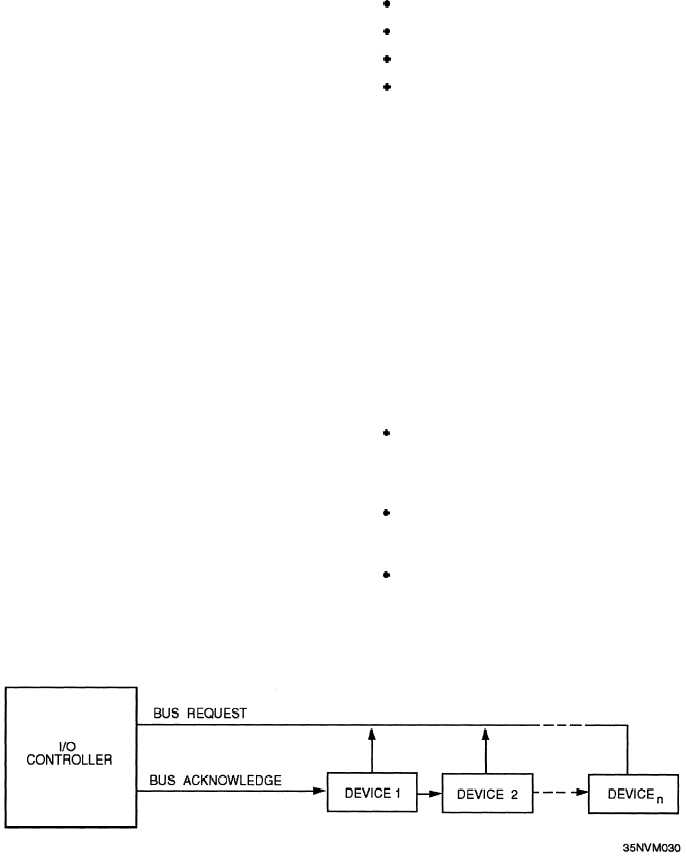preset method decides the order in which the devices
can use the computer’s bus. Refer to figure 7-16 as you
read. An I/O controller of some type will correspond
with the external devices. When an external device
requests control of the bus, it signals the controller by
activating the common bus request line. The devices
on the line have ORed connections. The controller
acknowledges the use of the bus on a separate line. The
I/O controller will scan the chain with an acknowledge
signal until it reaches the external device that requested
the bus. The external device stop further propagates
the acknowledge signal and accesses the bus. When
two or more devices request control of the bus, the
external devices closest to the I/O controller will be
granted access to the bus first. Thus the order of
connection on the daisy establishes the priority of which
external devices are given access to the computer’s bus.
Independent Request Control
Independent request control (fig. 7-17) offers a
faster and more flexible way to the control bus requests.
In this method, separate lines are used for the request
and acknowledge lines. The I/O controller assigns
priority to each external device, which can be fixed or
programmable.
A combination of the two methods
produces greater flexibility when dealing with
simultaneous requests, particularly when dealing with
interrupt driven I/O. When signaled on a common
interrupt request line, the CPU can poll all external
devices in a predetermined order to find which
external device needs to be serviced. This method is
entirely software. Generally speaking, computers that
use a request and acknowledge system, prioritize the
functions and the channels. Some of the functions, in
descending order, include the following:
. External Interrupt
l External Function
l Output Data
. Input Data
The channels/ports are also prioritized.
Equipments are assigned a channel/port and usually the
channel with the highest number will be serviced first
by the computer. Figures 7-14 and 7-15 apply.
I/O INTERFACING STANDARDS
There are two major types of computer/external
equipment communication formats: serial and
parallel. The communication formats are governed by
the standard that is identified by the interface. The
interfacing standards provide valuable information. As
a general rule the standards can be divided into four
categories: mechanical, electrical, functional, and
procedural. The standards can provide other standards
that must be adhered to but do not fall into any one of
these four categories.
l Mechanical —The mechanical portion takes into
account such things as the type of connectors to be used,
the number of pin connections in the connectors, and
the maximum cable lengths allowed.
. Electrical —The electrical characteristics
include the allowable line voltages and the
representations for the various voltage levels.
. Functional —The functional interface specifies
such things as which signals-timing, control, data, or
ground leads—are to be carried by each pin in the
connector.
Figure 7-16.—Connecting external devices in a daisy chain.
7-18


